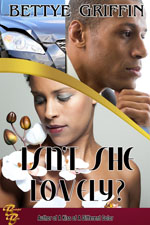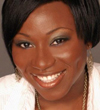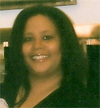 All writers deal with the dreaded writers block from time to time. It’s the enemy of all of us. It makes us huddle in corners, chew our nails to the nubs and go completely insane! But no more! You hear me? Writers no longer have to bow down to the big WB! You can beat it and it’s not as hard as you think.
All writers deal with the dreaded writers block from time to time. It’s the enemy of all of us. It makes us huddle in corners, chew our nails to the nubs and go completely insane! But no more! You hear me? Writers no longer have to bow down to the big WB! You can beat it and it’s not as hard as you think.
It’s about how you approach it. Some argue that WB isn’t real. That it’s all in our heads. Others are convinced it’s as harmful as a deadly disease. Well maybe that’s a little dramatic but if you’ve ever experienced writers block you know it can be a frustrating and sometimes terrifying experience because you don’t know if you will ever get an idea again.
Writers block is different than procrastination. Procrastination is our own fault. It’s when we have ideas, can write, but don’t. Writers block is when you’d sell a chunk of your soul for just a tiny bit of direction for your next story or scene. It’s miserable but there are tips to help you conquer it.
You guys know that by now I tend to only give advice that I use myself. So when I say these tips work, they work. Do not doubt me. I challenge anyone who is dealing with writers block at this moment to try at least one of these tips and I bet it will help you.
Leave the Work Alone
Yep, there is nothing wrong with walking away. This is what’s wrong with writers. We think we have to always write even when we can’t. Sometimes a lack of direction is a message from our bodies. Maybe our brains need a break. Maybe we are just exhausted. Maybe we are dealing with things in our subconscious we don’t realize. Learn that it is okay to take a break and just walk away. Ideas will come back to you and when they do, they will be better than ever. You will be surprised at how not writing can jumpstart ideas.
Stop Trying to Be Perfect
You can tell a perfection wannabe from a mile away. They can never write one single word without second-guessing themselves. They struggle over every single sentence, bellyache about every misused comma, cry about how the sentence just “doesn’t seem right”. If this is you, you my friend are your own worst enemy.
You cannot expect your work to be perfect, point blank. You especially can’t expect a first draft to be perfect. If you agonize over everything to the point of obsession you will never finish a book. So you need to remember you are allowed to make mistakes. Let your muse run freely. Stop interfering with its flow. Once you give your muse control you’ll be able to write and you’ll feel at ease doing it.
The first draft is the time to just get those ideas on paper to resemble some kind of story. Save panicking for when it’s time to edit and revise.
Don’t be a Rule Whore
Sorry for my choice of words but needed to be blunt. That’s how I do. A rule whore, oh yeah we know it. It’s mainly writers just starting out who think they gotta follow every writing rule they see. They tie into the perfection crowd. Look writing rules are there for a reason but you do not have to live by them. Once you’ve learned the basics of writing and you’re good enough, rules can be broken. You’re only hurting yourself if you try to write to a rulebook. You will stifle your own creativity because you’re too busy worrying about how many exclamation marks or adverbs you can use than writing the darn story!
Once again, the first draft is not the time to panic. You can go back and edit by using the rules that can make your work better. Don’t, and I repeat, don’t write strictly by the rules.
Stop Trying to Shortcut Drafts
Some writers try to be squeaky clean during the first draft so they don’t have to go back and edit. Give it up. You’re making it hard on yourself because once again you’re fighting to be perfect. You are going to have to edit and probably even revise that thing plenty of times so deal with it. Also would you wanna be an author who just throws up one draft and put it out into the world? No. And if you plan on being published you are gonna have to realize that you might go through as many as ten or more drafts of the same book before it’s ready. It’s just part of the business.
Ditch It
Hmm, sometimes things are commonsense. And no I’m not trying to be condescending. I’m trying to get writers to see that we do more harm than good to ourselves in terms of writers block. If something is not working whether it’s a scene or even a story, ditch it. If you cannot make that sucker work maybe that’s a sign that you shouldn’t write it.
Writers have huge egos. Yes, yes we do. And we can’t stand having to walk away from anything especially permanently but sometimes the story you want to tell is not the story your muse wants to tell and honey you aren’t getting anywhere without the muse agreeing.
If you found this post helpful, please use the share buttons to spread the word.
Stacy-Deanne (Dee-Anne) is an award-winning novelist of crime, mysteries and interracial romance. She is known as “Interracial Romance’s First Lady of Crime and Mystery.” She’s been writing professionally since 19-years-old, and her work includes “Divas of the New Millennium,” “Everlasting,” “Melody” and “Giving up the Ghost.” Stacy is profiled along with notable authors in the NAACP-nominated 2006 book, “Literary Divas: The Top 100+ African-American Women in Writing.” She is a 2011 African-American Literary Award Show nominee.
Don’t have a copy of Become A Successful Author? What are you waiting for? Become A Successful Author will be used in the “How To Write That Novel” course at Chicago State because it covers everything from branding to writing to editing to formatting and uploading electronic and print books to marketing and so much more. Your time is money. Look at all the time, thus money, you’ll save by ending your search for answers: Purchase Become A Successful Author for only $4.99 (eBook) or $9.99 (print) from: Amazon (US), Amazon (UK), Barnes & Noble









